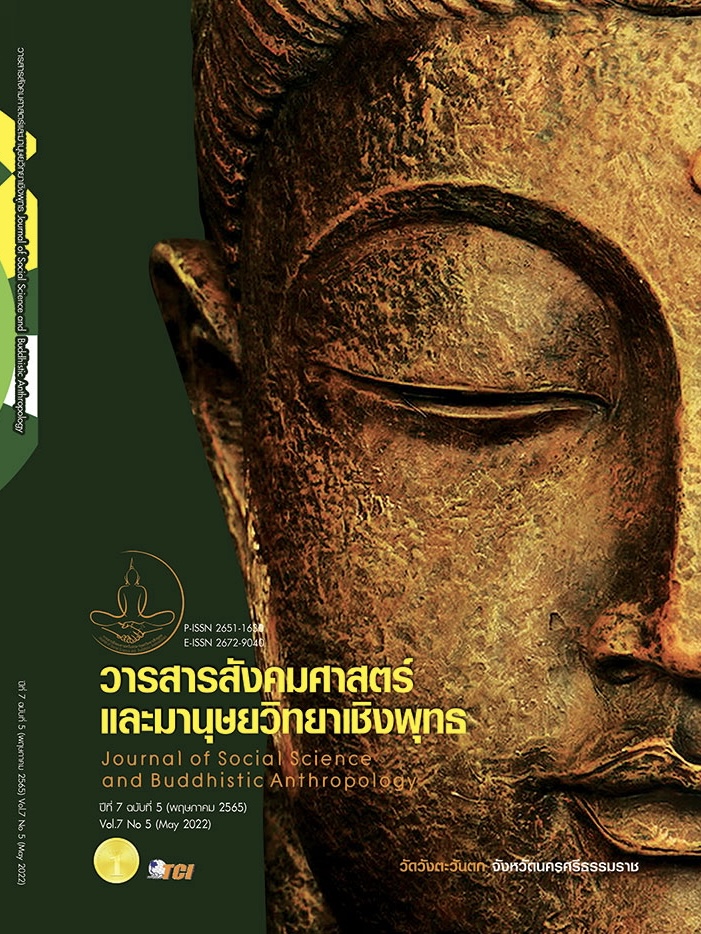CASH FLOW INFORMATION FOR INVESTMENT DECISIONS OF LISTED COMPANIEC IN THE STOCK WXCHANGE OF THAILAND, SET 100 GROUP: BEFORE AND AFTER THE IMPLEMENTATION OF THE INTERNATIONAL FINANCIAL REPORTING STANDARD (IFRS)
Keywords:
The Value of Accounting Information, Cash Flow, Stock Price, Financial Reporting Standards, Stock Exchange of ThailandAbstract
The objectives of this research article were to study the utilization of accounting information in making investment decisions and under financial reporting standards and to study the utilization of cash flow data in investment decisions under accounting standards and financial reporting standards; it is quantitative research by collecting secondary data (Secondary Data) from the collection of financial statements for 10 years, totaling 1,000 companies, divided into 2 periods under the accounting standard (old version) (data financial statements for the year 2006 - 2010) and information under Financial Reporting Standards (New Edition) (Financial Statements 2011 - 2015) of SET100 Index Companies, except the Financial Industry Group due to differences in the preparation of the statements. Finance and companies that disclose incomplete information The remaining samples were 781 companies. The researcher applied The concepts from Ohlson's model as a statistical model and analyzed statistics. Multiple Regression Analysis in the correlation analysis of variables, the research results revealed that the utilization coefficient of accounting information in investment decisions (Adjusted R Square) under the accounting standard (old version) was equal to 84.5% and under the Financial Reporting Standard (New Edition) equal to 75.20% and the utilization coefficient of cash flow information in investment decisions found that the coefficient of utilization of accounting information in investment decisions (Adjusted R Square) under the accounting standard (old version) was 94.00% and under the financial reporting standard (new version) was 77.40%. Able to utilize Information on changes in accounting standards in the country, this allows investors to use accounting data in forecasting in combination with other data such as political uncertainty for use in making investment decisions.
References
เกียรตินิยม คุณติสุข และสุธา เจียรนัยกุลวานิช. (2554). บทบาทสำคัญของมาตรฐานการรายงานทางการเงินระหว่างประเทศในโลกยุคปัจจุบัน. วารสารนักบริหาร, 31(3), 176-180.
ชนากานต์ มงคลพร และพัทธนันท์ เพชรเชิดชู. (2558). คุณค่าของข้อมูลทางบัญชีที่เกี่ยวเนื่องกับการตัดสินใจ : ก่อนและหลังปรับใช้มาตรฐานการรายงานทางการเงินระหว่างประเทศ. ใน วิทยานิพนธ์บัญชีมหาบัณฑิต สาขาวิชาการบัญชี. มหาวิทยาลัยธุรกิจบัณฑิตย์.
ตลาดหลักทรัพย์แห่งประเทศไทย. (2562). การลงทุนอยางยั่งยืน. เรียกใช้เมื่อ 10 เมษายน 2563 จาก https://www.set.or.th/sustainable_dev/th/sr/sri/thsi_p1.html
ภูษิต วงศ์หล่อสายชล. (2558). กระแสเงินสดอิสระกับมูลค่าตามราคาตลาด. ใน สาระนิพนธ์บัญชีมหาบัณฑิต สาขาบัญชี. มหาวิทยาลัยธรรมศาสตร์.
Ball, B. & Brown, P. (1968). An empirical evaluation of accounting income numbers. Journal of Accounting Research, 6(2), 159-178.
Corwin A. S. & Schultz P. (2011). A Simple Way to Estimate Bid-Ask Spreads from Daily High and Low Prices. Retrieved August 10, 2020, from https://www.papers.ssrn.com/sol3/papers.cfm?abstract_id=1106193
Easton, P. & Harris, T. (1991). Earnings as an explanatory variables for returns. Journal of Accounting Research, 29(1), 19-36.
Kongprajya, A. (2010). An analysis of the impact of political news on Thai stock market. In Master of Arts thesis Risk Management. University of Nottingham.
Lin, H. C. et al. (2012). A study on the relationship between human resource Management strategies and core competencies. International Journal of Organizational Innovation (Online), 4(3), 153-173.
Maksy, M. M. & Chen, G. T. (2014). Which free cash flow is value relevant? An Empirical inventigation. Journal of Accounting and Finance, 14(6), 189-200.
Maksy, M. M. & Chen, G. T. (2016). IS Free Cash Flow Value Relevant? The Case of the Information Technology Infustry. Journal of Accounting and Finance, 16(5), 73-84.
Morgan Kathryn. (2555). มาตรฐานรายงานทางการเงินระหว่างประเทศ (IFRS). Retrieved สิงหาคม 10, 2563, from http://www.ap-morgan.com/forum/index. php?topic=3614.0
Ohlson, J. A. (1995). Earning book value and invidends in equity valuation. Contemporary Accounting Research, 11(2), 661-687.
Pastor, L. & Veronesi, P. (2012). Uncertainty about government policy and stock prices. The Journal of Finance, 67(4), 1,219-1,264.
Umoren, A. O. & Enang, E. R. (2015). IFRS Adoption and Value Relevance of Finance Statements of Nigerian Listed Banks. in International Journal of Finance and Accounting, 4(1), 1–7.
Zarowin, P. & Livant, J. (1990). The incremental information content of cash - flow components. Journal of Accounting and Economics, 13(1), 25-46.
Published
How to Cite
Issue
Section
License
Copyright (c) 2022 Journal of Social Science and Buddhistic Anthropology

This work is licensed under a Creative Commons Attribution-NonCommercial-NoDerivatives 4.0 International License.








